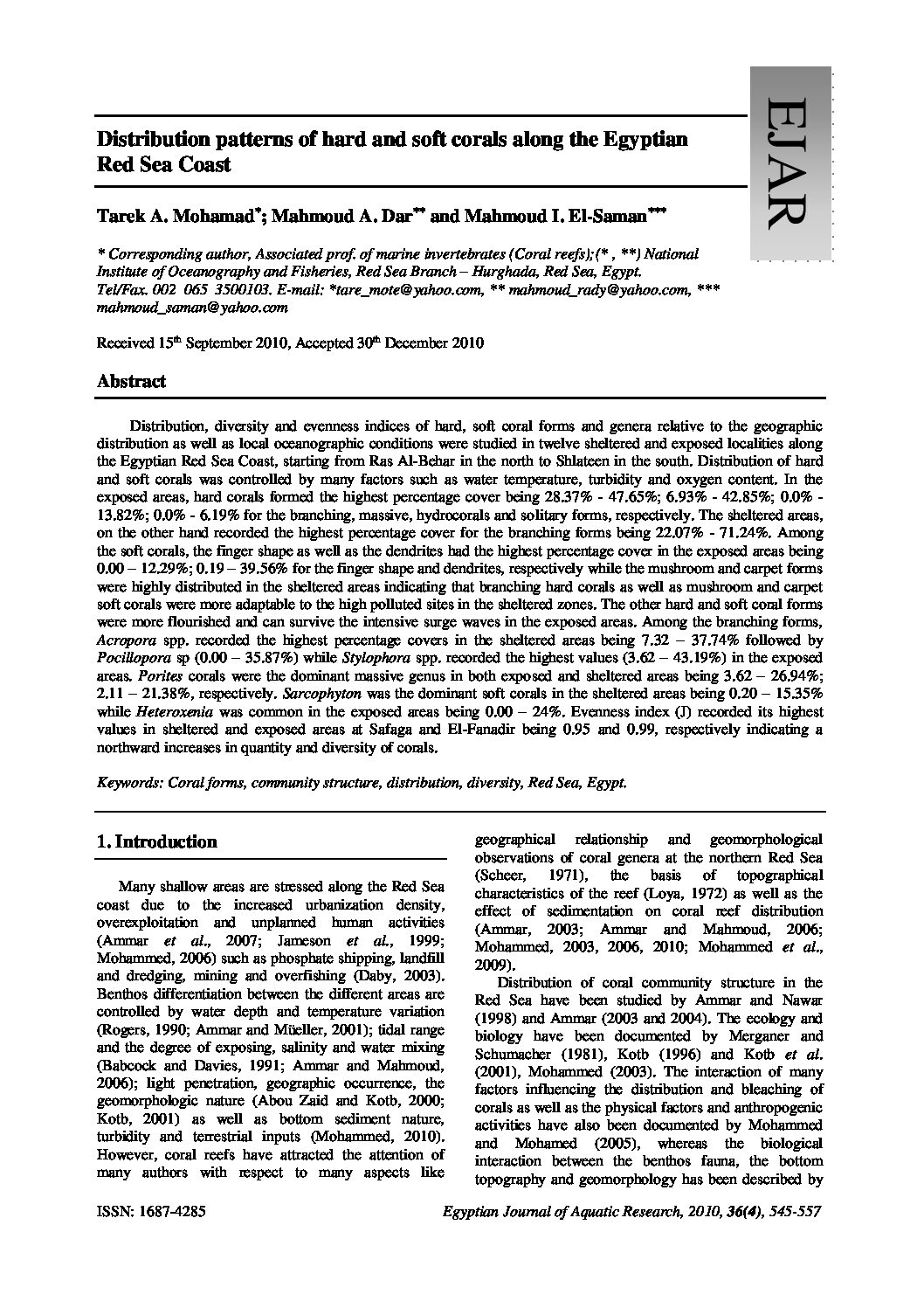Categories
vol-36Distribution patterns of hard and soft corals along the Egyptian
Red Sea Coast
Tarek A. Mohamad*
; Mahmoud A. Dar** and Mahmoud I. El-Saman***
* Corresponding author, Associated prof. of marine invertebrates (Coral reefs);(* , **) National
Institute of Oceanography and Fisheries, Red Sea Branch – Hurghada, Red Sea, Egypt.
Tel/Fax. 002 065 3500103. E-mail: *[email protected], ** [email protected], ***
[email protected]
Received 15th September 2010, Accepted 30th December 2010
Abstract
Distribution, diversity and evenness indices of hard, soft coral forms and genera relative to the geographic
distribution as well as local oceanographic conditions were studied in twelve sheltered and exposed localities along
the Egyptian Red Sea Coast, starting from Ras Al-Behar in the north to Shlateen in the south. Distribution of hard
and soft corals was controlled by many factors such as water temperature, turbidity and oxygen content. In the
exposed areas, hard corals formed the highest percentage cover being 28.37% – 47.65%; 6.93% – 42.85%; 0.0% –
13.82%; 0.0% – 6.19% for the branching, massive, hydrocorals and solitary forms, respectively. The sheltered areas,
on the other hand recorded the highest percentage cover for the branching forms being 22.07% – 71.24%. Among
the soft corals, the finger shape as well as the dendrites had the highest percentage cover in the exposed areas being
0.00 – 12.29%; 0.19 – 39.56% for the finger shape and dendrites, respectively while the mushroom and carpet forms
were highly distributed in the sheltered areas indicating that branching hard corals as well as mushroom and carpet
soft corals were more adaptable to the high polluted sites in the sheltered zones. The other hard and soft coral forms
were more flourished and can survive the intensive surge waves in the exposed areas. Among the branching forms,
Acropora spp. recorded the highest percentage covers in the sheltered areas being 7.32 – 37.74% followed by
Pocillopora sp (0.00 – 35.87%) while Stylophora spp. recorded the highest values (3.62 – 43.19%) in the exposed
areas. Porites corals were the dominant massive genus in both exposed and sheltered areas being 3.62 – 26.94%;
2.11 – 21.38%, respectively. Sarcophyton was the dominant soft corals in the sheltered areas being 0.20 – 15.35%
while Heteroxenia was common in the exposed areas being 0.00 – 24%. Evenness index (J) recorded its highest
values in sheltered and exposed areas at Safaga and El-Fanadir being 0.95 and 0.99, respectively indicating a
northward increases in quantity and diversity of corals.
Keywords: Coral forms, community structure, distribution, diversity, Red Sea, Egypt.







